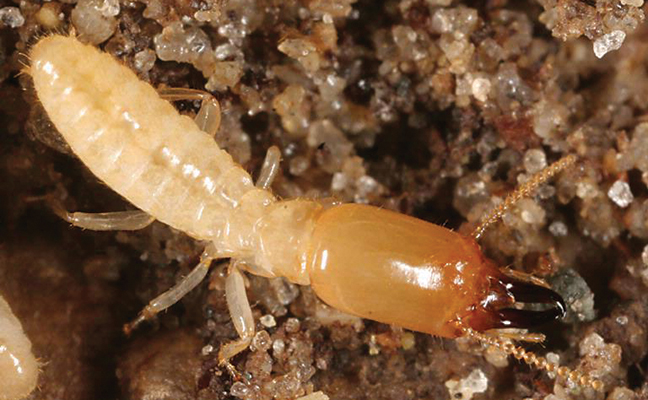As with any relatively new control technique, one learns how to improve upon it over time and trial. Here are 13 practical tips you can try, regardless of the in-ground termite bait stations you use:
- That old black (plate) magic: In the early spring when it is cool, place a black plastic plate or flying disc over the bait station. It will absorb heat and draw the termites to the area. Once the heat of summer arrives, though, be sure to remove it, as it will repel termites far away from the extreme heat.
- A new use for baby diapers: When soil is very dry, try soaking a clean baby diaper in water and wrapping it around the termite bait station before placing it in the ground.
- Think like a termite: Termites initially find in-ground bait stations by randomly foraging in a given area. The systemic searching is not random, but the movement within a zone is random. The exception is if they are following markers, such as underground tree roots or below-grade electrical and plumbing lines. Keep this in mind when installing termite bait stations.
- Clean up the competition: To help speed up the chance of termites finding the bait station, pick up wood and fiber debris in the area. With less competing food supply around, termites are forced to look for new food sources. More than once, I have found cardboard or lumber on the ground with thousands of live termites happily harboring and feeding — within 2 ft. of untouched bait stations.
- Carry a strong flashlight: Take your flashlight with you, even in bright sunlight. When you look at the bottom of the bait station, you may miss live termites if it is dark. A flashlight allows you to spot them and take appropriate action.
- Control termite predators: Ants and earwigs learn to wait for termites and eat them as they approach a bait station. In some cases, it’s wise to bait for these predators. Remember, the termites have to transport the bait back home to eliminate the rest of the colony.
- Consider the season: Subterranean termites chow down in early spring, and again in late fall, before it gets cold. Be sure to check stations just before winter. They will eat all year long, but seem to need more food at these times.
- Insert the bait station properly: The top of the termite bait station needs to be flush to the ground to draw in termites; for various reasons, this does not always happen. The ground may be rocky or made of coral, or perhaps frost pushed the station back up. Use proper equipment to insert the station per label directions. If you are having trouble, ask your distribution or manufacturer representative what to use to dig the right depth and circumference hole.
- Mark your spot: To help you find where you installed your bait station, mark foundations. Sometimes mulch is added over the top of your station, for example. Be sure the mulch is applied thinly, as termites may tunnel over the top of your station when the mulch is thick.
- Do not smoke and handle bait containers: Wear gloves if you smoke. Also, avoid storing the termite bait tubes where other pesticide odors are present. Both conditions can reduce bait acceptance.
- Avoid downspouts: Placing termite bait stations near downspouts is not a good idea. They will flood, and a mold species that repels the termites will take over.
- Make the bait station hard to remove: Sometimes raccoons or children succeed in pulling the termite bait station out of the ground because of the way the cover can be lifted. Where this is a concern, you may have to modify your approach and take off the wide rim cover to make the station more difficult to pull out of the ground.
- Inspect before you inspect: Sometimes you are so focused on the termite bait station, you fail to see an active tube running up the foundation of the building. Stand back and look around before and after you check the actual bait stations.
Contact Dr. Austin Frishman, a PMP Hall of Famer, at PMPEditor@northcoastmedia.net.

Leave A Comment